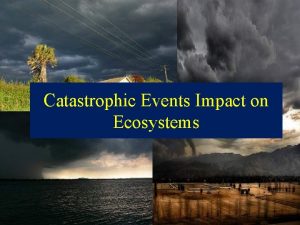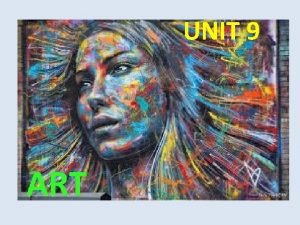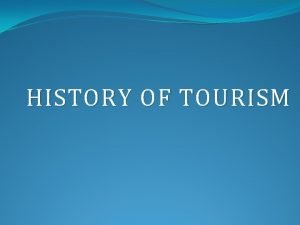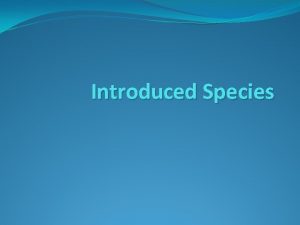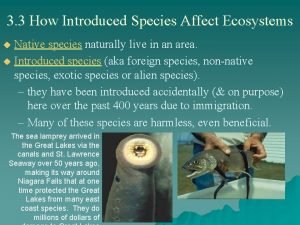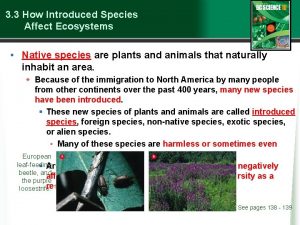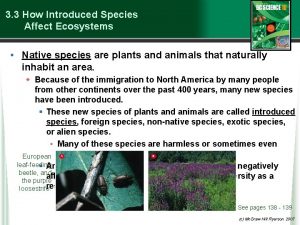3 3 How Introduced Species Affect Ecosystems Native






- Slides: 6

3. 3 How Introduced Species Affect Ecosystems • Native species naturally live in an area. • Introduced species (aka foreign species, non-native species, exotic species or alien species). • introduced both accidentally & on purpose over the past 400 years due to immigration. • Can be harmless, beneficial, or damaging Ex. Introduced species: The sea lamprey in the Great Lakes.

Invasive Species • Invasive species: introduced species that often take advantage of their new habitat. • may have no predators, are aggressive competitors, & reproduce fast. • Eg. Purple Loosestrife, negatively impacts native species, & often reduces biodiversity as a result. Ex: European leaf -feeding beetle (left), & Purple Loosestrife.

The Impact of Introduced Species • Competition: one species takes away resources from another. 50 breeding pairs of the European Starling were brought to BC in the late 1800’s. It now out-competes western bluebirds for nesting habitat. The American Bullfrog was brought to BC in the 1930’s by restaurants for their legs. It has since taken over the habitats of native frogs.

• Predation: if the invasive species is a predator, it may have a huge advantage, as the native species may have no methods to survive. Ex: The Norway rat escaped from early European explorer and furtrading ships. On Queen Charlotte Islands, they have caused a decline in groundnesting sea birds, such as ancient murrelets and puffins, by their eggs and young. species, byeating weakening certain • Disease & Parasitism: a micro-organism invading an ecosystem can drastically alter the entire ecosystem & the niches within it. Ex. West Nile virus • introduced to USA in 1999 • causes deaths in birds & illness in humans in NYC • vector borne disease, carried by the mosquito.

• Habitat Alteration: some invasive species can change the physical structure of the ecosystem by digging, burrowing, blocking sunlight or changing the chemistry of the ecosystem. Ex: Eurasian Milfoil • first identified in Okanagan Lake in 1970 • forms wide, dense mats at lake surfaces, cutting off sunlight to organisms below & interfering with rec. activities • can grow from plant fragments, which are often spread by boats.

Saving an Ecosystem Under Siege • It often takes human intervention to save established ecosystems. • The Garry Oak Ecosystem Recovery Team (GOERT) is trying to save several areas of the Garry Oak ecosystem in BC • b/c they are a keystone species, they may be better suited to survive in the future than Douglas fir forests. • Scotch broom, English ivy & other plants are its biggest threats. Take the Section 3. 3 Quiz
